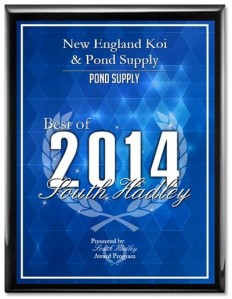Columnaris (Flexibacter columnaris) or Cotton Wool Disease is another bacterial infection. The common name comes from the white tufts that develop around the mouth and spread to the body and fins, often leading to ulcers and a thin appearance.
Often mistaken for a fungal infection because of its mold-like lesions, Columnaris is a common bacterial infection in cultured fish, particularly livebearing fish and catfish. Its name is derived from columnar shaped bacteria, which are present in virtually all pond environments.
The bacteria are most likely to infect fish that have been stressed by such conditions as poor water quality, inadequate diet, or handling and shipping. Columnaris can enter the fish through the gills, mouth, or via small wounds on the skin. The disease is highly contagious and may be spread through contaminated nets, specimen containers, and even food.
Treatment with anti bacterial medicine is usually effective.
More Koi Diseases
Crustacean parasite, Lernaea - Anchor worm is a common parasite on our Koi which is clearly visible to the naked eye and can reach 10 to 12mm. The parasite burrows its head into the Koi's tissue, under...(click on product image for more details)
Costia is a minute Flagellate with 3-4 flagella. It affects both the skin and gills of Koi, and reproduces itself by binary fission. Infestations of this parasite can appear very rapidly indeed, and Koi...(click on product image for more details)
Raised scales rather like a pine cone and eyes standing out from the head.
Dropsy itself is not a disease, but rather a result of some other cause. Dropsy is a term given to the swelling that occurs...(click on product image for more details)
A number of bacteria are associated with finrot, lesions and internal hemorrhaging, notably Aeromonas and Pseudomonas. Ulcers usually start at the site of an injury, the bacteria then infect it causing...(click on product image for more details)
Argulus another crustacean parasite, round and up to 1cm wide. They have a sucker to hold on to the Koi with needle-like mouth parts which they stick into the Koi and inject a toxin. This causes intense...(click on product image for more details)
Gill maggots are the mature females of the parasitic crustacean Ergasilus.
Ergasilus gill maggots will appear as grayish black and white parasites several millimeters long infesting the...(click on product image for more details)
One of the most common fungal infections of Koi. The fungal spores will grow anywhere on the Koi, including the gills, initially germinating on dead tissue. Their threadlike hyphae release digestive...(click on product image for more details)
Gill and Skin flukes are two of the family of monogenetic trematode genera, all of which are characterised by the large grappling hooks which are used to attach themselves to their victims.
Flukes...(click on product image for more details)
Trichodina is one of the easiest protozoan parasites to detect under the microscope as it is almost perfectly round with hundreds of hooks which resemble cilia found its periphery and it constantly...(click on product image for more details)
Caused by Ichthyopthirius multifiliis. The white spots on the skin, gills and fins are individual protozoan cells that are under the skin and feed on the body fluids and cells. They then punch out of...(click on product image for more details)

